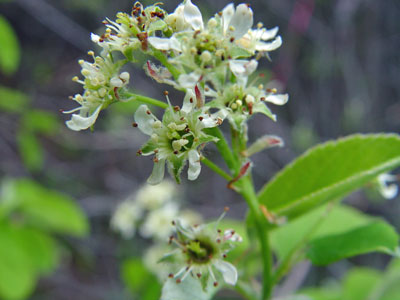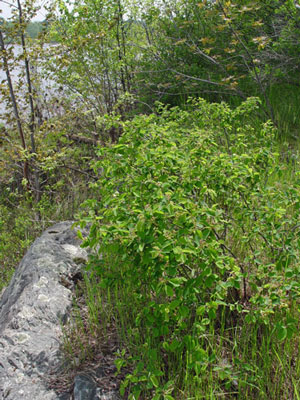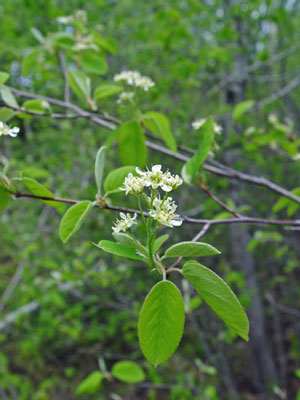DACF Home → Bureaus & Programs → Maine Natural Areas Program → Communities, Plants, and Animals → Rare Plants → Amelanchier nantucketensis
Amelanchier nantucketensis Bickn.

Nantucket Shadbush
- State Rank: S2
- Global Rank: G3Q
- State Status: Threatened
Habitat: Pine barrens, pond margins, fields, edges, and thickets. [Dry barrens (partly forested, upland); Non-tidal rivershore (non-forested, seasonally wet); Old field / roadside (non-forested, wetland or upland)]
Range: Nova Scotia south along the coastal plain to Maryland.

Aids to Identification: Identification of shadbush species is complicated by frequent hybridizations which occur between most species. Nantucket shadbush is characterized by its flowers which are arranged in racemes, with petals only 3-4 mm long (much shorter than most other shadbushes). The plants are colonial, with many upright, straight stems up to 2 meters tall. The sketch shown here is that of A. intermedia which has longer petals and leaves which are not as thick as those of A. nantucketensis.
Ecological characteristics: Unknown.
Phenology: Flowers in May.
Family: Rosaceae
Synonyms: Amelanchier micropetala (B.L. Robins.) Ashe; Amelanchier oblongifolia (Torr. & Gray) M. Roam. var. micropetala B.L. Robins.; Amelanchier stolonifera Wieg. forma micropetala (Robins.) Rehd.
Known Distribution in Maine: This rare plant has been documented from a total of 8 town(s) in the following county(ies): Aroostook, Hancock, Penobscot, Washington.

Reason(s) for rarity: Suitable habitat is scarce.
Conservation considerations: Some known populations have succumbed to conversion of their habitat to residential or commercial use; others are vulnerable, occurring in developable habitats or along roadsides. At least one population occurs within a powerline corridor, but since this plant tolerates or perhaps requires disturbance, some forms of powerline maintenance may help maintain populations.